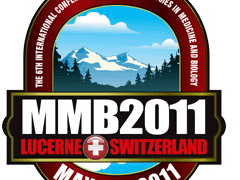 | |
|
| |
About Lucerne Conference Map Lucerne Tourism Board |
About Lucerne Nestled among the foothills of the Alps, the city of Lucerne lies at the end of a lake that has been eternalized by poets and composers. An incredible panorama begins here which stretches from Mount Rigi to Mount Pilatus and, depending on the weather, season or time of day, sets dramatically different moods. Lucerne, with 60,000 inhabitants, is the eighth largest city in Switzerland. When the agglomeration is included, this figure triples. Lucerne is the capital of Central Switzerland due to its size, central location and economic potential. As the first city in the Confederation of States in 1332, Lucerne had always held a special position, and its geographical location should have predestined it to be the Swiss capital. But since the canton (Swiss state) of Lucerne had led the "Sonderbund" Alliance, which was defeated in 1847, and then in 1848 voted against the Federal Constitution, Bern was finally chosen as the capital. In the mid 19th century the city gratefully seized the opportunity offered by tourism to recapture some of its lost glory. A Brief History of Lucerne The city does not appear to have been officially founded. There was probably a small settlement here near the lake during Roman times or earlier. The St. Leodegar monastery has existed since the early 8th century and was first mentioned in documents in the year 840. An important marketplace developed around the Ruess Bridge, which connected the monastery with the feudal court to the south. Historians regard 1178 as the year of the birth of Lucerne, because it was then that the parish was transferred from the monastery to the city. The opening of the Gotthard Pass around 1220 created new stimulus for growth. The first fortification wall with towers was constructed during this time and stretched from the Grendel via Grabenstrasse to the Mühleplatz square. It also encompassed the still-insignificant left bank of the city, ending near the lake with the Chapel Bridge and Water Tower. |